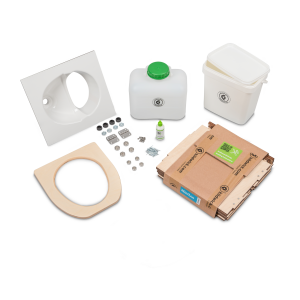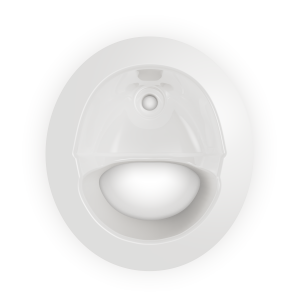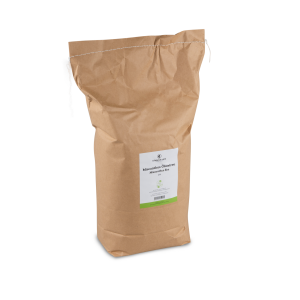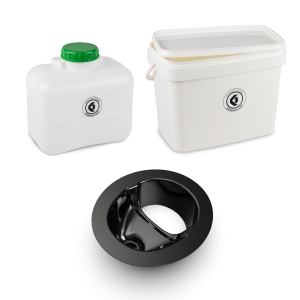Composting toilet for your garden
Separating toilets are a good choice for garden owners who want to live more sustainably and reduce their environmental impact. Unlike conventional toilets, which discharge waste water into the sewage system, a separating toilet separates urine and faeces, allowing the waste material to be used in your own garden.
How is a composting toilet for the garden constructed?
A composting toilet consists of two parts: a tank for collecting urine and a container for collecting faeces. The urine is fed into the tank and can then be used as a fertiliser as it is rich in Nitrogen (do not forget to dilute it with water 1:10), phosphorus and potassium. Faeces are fed into the container and can be converted into a humus-like substance through composting, which can also be used as a fertiliser.
One of the great advantages of separating toilets is that they provide a clean and hygienic way to process waste in your own garden. They also reduce the load on the sewage system, helping to reduce the environmental impact.
Another advantage of separating toilets is that they can be easily integrated into your own garden. They can be housed in a shed or garage and do not require any major alterations.
However, composting toilets or urine-diverting toilets also have some disadvantages. One of them is that they need to be emptied and maintained regularly to ensure hygienic and safe use. Another problem is that they are not permitted in some regions and you should find out about the applicable regulations in advance.
Overall, the separating toilet is a good choice for garden owners who want to live more sustainably and reduce their environmental impact. It offers a clean and hygienic way to process waste and helps to reduce the burden on the sewage system.




